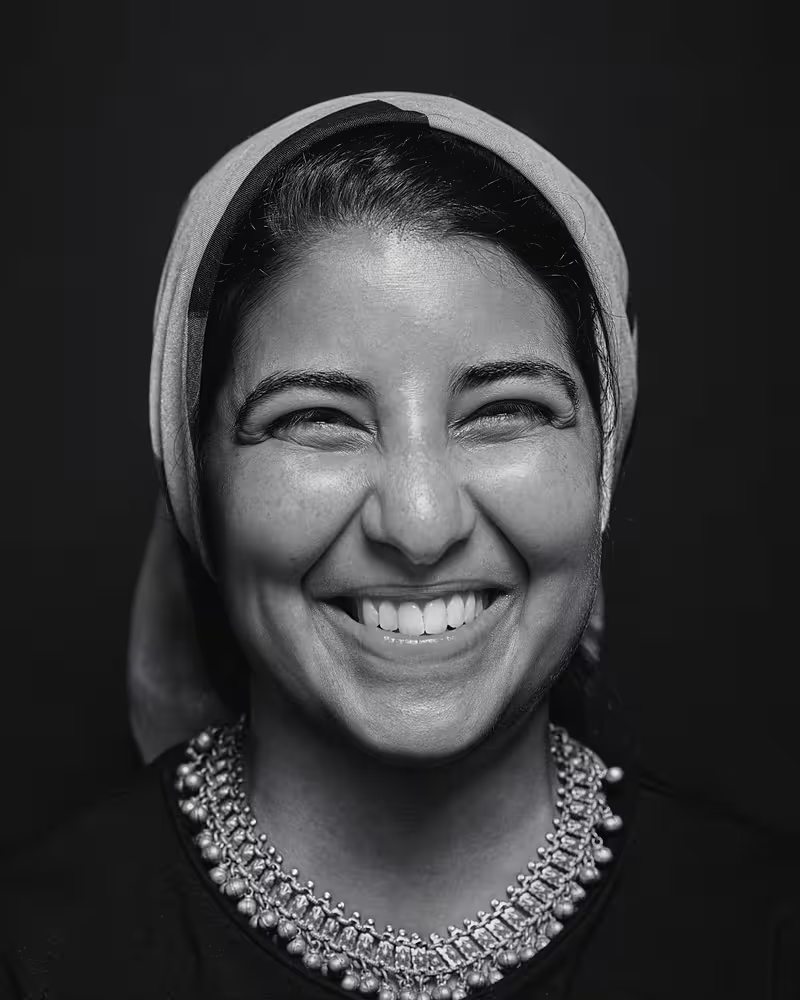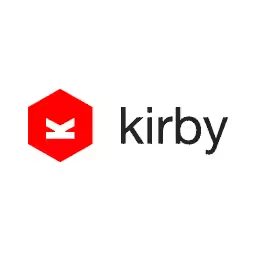dina Amin

dina Amin is a designer from Cairo, Egypt. She completed her B.A. (Hons) in Industrial Design in Malaysia. Although trained as a Product Designer, dina loves to explore the intersections between various disciplines. She developed an array of skills from working in different fields such as Content Design, Writing, Design Research and Development, and Community Building.
In 2016, dina started a side project called ‘Tinker Friday’ on Instagram, where she combined her passion for product design and stop motion with her views on consumerism. In this stop motion series, dina shows people what’s inside the countless things they throw away, in unusual ways. dina continues to tinker, making new items out of old ones, constantly telling stories and showing people things in a completely different way.
After discovering her love for stop motion, dina also founded “Tinker Studio”, where she produces stop motion videos for diverse clients and companies around the world.
Talk: A Tinker Story
In this talk dina will share her tinker story, how it all started and why she continues to tinker. She will share what she’s learnt so far and the biggest mistakes she’s done. And hopefully show you a side of Egypt you’ve never seen before.
Transcription
Audience: [Applause]
dina Amin: Thank you. Hello. My name is dina, and I just want to ask you. I want to get two things out of the way before I start. Anyone here ever met an Egyptian before? Show of hands. Okay, a few.
Okay, I have to tell you this. I am probably the tiniest adult Egyptian you’ll ever meet. Okay? [Laughter]
Audience: [Laughter]
dina: So, Egyptians are not really that short. [Laughter]
The second thing is, my name is dina Amin and not Dina Amin. This is not a typo that Marc made. I really have serious issues with capital Ds. I’m sorry, but my dislike for capital Ds exceeds my love for grammar, so this is how I write my name. [Laughter]
I don’t know. I just don’t like the shape of it, something about the proportions, and I know what you’re going to tell me because I’ve had these conversations before, believe it or not. But, my friends would tell me, “You’re crazy. D is such a fancy, elegant letter.”
I would tell them, “No, the D is a mean letter,” because when I see the D, the big D letter written beside the other little letters, this is what I actually see. I see-- [Laughter]
Audience: [Laughter]
dina: I see a big, mean letter just telling the other little letters to just move along. [Laughter] I know, a very valid reason.
Audience: [Applause]
dina: I would occasionally find myself doing all these connections, looking at something, and seeing it completely different, all this done unconsciously. But, over the last few years, this was actually all I’ve been doing.
I unintentionally started a project on Instagram where I would pick a product that people would throw away. Every week I would pick one random product. I would take it apart, show people what’s inside, and then transform it using stop motion. It’s very hard to explain; easier to show you.
My goal today is to show you things that you’ve never seen before. Let’s see how that goes.
Have you seen this before? This is like an old mobile pouch. We used to use them, like, decades ago. They still exist, but are all obsolete, thrown away somewhere. I’ll show you what’s inside my mobile pouch.
[Music]
dina: [Laughter]
Audience: [Applause]
dina: Thank you. Have you ever seen a mobile pouch that transforms into a super -- super--? Yes! You’re lying. [Laughter]
I started doing this without actually knowing anything about stop motion. I am not an animator. I studied product design, and I knew nothing about stop motion when I started this. I didn’t even own a camera, a tripod, or anything.
I would take the photos with just my phone. I would take my phone to the table, and all I knew about stop motion is the idea of stop motion. That I should take several photos and, in each photo, I move my subject just a little bit. When I compile all these photos together, it will appear as if it’s moving on its own.
This is what I was just trying to do every week. I just wanted to get all the ideas out of my head into the real world, and this is all I would do. I would just sit, take the photo, move my subject, take a photo, and move my subject, for hours and hours and hours and hours.
It didn’t just start, like I didn’t wake up one day and decide, oh, I just want to take apart products, animate them, and transform them into things. Of course, this is not how it happened. I did study industrial design in Malaysia, and I loved product design and industrial design. I loved how we can design new things that people can interact with, use, and even solve a problem.
But, I also hated a big part of product design, which in real life most of the things that we design end up being thrown away, and for many reasons. Either they were just a trend, we didn’t really need them, or they became obsolete. For someone who is coming from Egypt, most of the products that we get in Egypt are of very low grade that don’t actually function for a long time, maybe just two weeks or something, but their low price range fulfills a very essential need in the market.
This photo was taken from one of the scrap markets in Cairo. Yes, this is a train track, and this is a moving train. It’s not really an issue in Egypt. It’s okay.
Audience: [Laughter]
dina: [Laughter] But, I did graduate from industrial design, and I came back to Egypt. I worked a bit in product design and a lot of other jobs as well, different from the design field, even. But, I was equally passionate about all of them, and I thought, “It’s okay. I’m going to explore. Maybe one day I’ll just stumble upon the thing I love the most, and I’m going to do this. I’m going to find it one day.”
But, years have passed, and I started; I reached this level where I really could not recognize what I love anymore. I didn’t even know what this was because I didn’t even know if I loved product design or not. I mean, like, I’m an Egyptian, like an Egyptian girl who left Egypt and went abroad to study, but then I’m not doing product design anymore, and this is a big thing.
Then I would find myself really settling for really low opportunities and just accepting whatever was considered available in Egypt. The five years ago dina would have never done this. I remember this very clearly. I was sitting in our old apartment. We were moving houses, and I was sitting in my now empty bedroom. I had this thought. I was thinking, “What if I don’t find the thing that I love to do the most? I’m not going to find it one day; just bump into it.” This is not coming out of depression or being a negative person, but what if I don’t actually find it because I’m meant to start it; I’m meant to create it?
The thought of this really encouraged me. I was like, “Okay, then this is perfect,” because I was leaving my last job, and I was working only part-time, so I had time to start something. I was like, “Okay, I’m going to start something. What do I like?” I realized that this is a really bad step because I just noticed that the problem is that I don’t know what I like. [Laughter]
I started thinking more like, okay, it has to be some sort of a career. It has to be at least a financially rewarding career. It has to pay the bills career. It has to relate to people somehow. Maybe solve a need. Maybe something that people will love.
Then I realized that this was too many criteria for this, and I decided to stick only to one thing, to do something that I like. When I removed all these extra things, it became really easy. I was sitting in my room, and then I looked across and found one last box that wasn’t allowed in the new house. It was filled with broken, old objects that I’ve been collecting over the years and meant to take apart, but I never got the time to do this.
I looked at it, and I was like, “I actually really like taking products apart. If I would do one thing, I would spend my life taking apart products.” [Laughter]
Audience: [Laughter]
dina: I don’t know how can I make a career out of it, but I decided I’m not going to think of how can I make money off of this, how can this be a job, would this make people happy? Of course, my parents, when they discovered my new plan, they were really happy. [Laughter]
It’s like, “Mom, I’m quitting my job, and I’m just going to sit in a room, take things apart.” She was really happy. She was like, “Oh, so you’re not going to go out? You’re not going to meet new people, a potential husband?” [Laughter]
Audience: [Laughter]
dina: It was hard. It was hard in the beginning, but I decided to do this. I only had free time starting on the weekend. The weekend starts on Fridays in Egypt, so I decided every Friday I would pick something out of the box, take it apart, just look at it, and just research about it. I love to document things, so I thought maybe I’ll use Instagram to document it. I’ve never personally used it before, and I occasionally blogged before, but I’m really scared of the Internet. [Laughter]
I would actually blog, but never share my work. [Laughter] I thought Instagram was perfect because people take selfies on Instagram. No one would really want to see photos of broken objects. I was like, okay, this is a really comfortable zone, and I’m going to do this.
I started to do this. I’d just take a photo of my object, just take it apart, take just a still photo, post it online, and write all my analysis or something interesting that I found out. Actually, a few people started to follow along. Then one day while I was taking apart a shaver, I thought just one still photo is actually not enough because people really need to see what I’m seeing. They need to see how incredible this is. It’s like a whole puzzle coming together and coming back apart.
I decided to do the stop motion thing. I knew it existed. I was like, “Okay, I’m going to do a stop motion,” and I took, like, 500 photos and made, like, a one-minute video. I discovered that I can’t post it because Instagram then only allowed, like, 15 seconds. [Laughter]
Audience: [Laughter]
dina: I went online and searched and learned about framerate. Framerate is the number of frames per second played. In stop motion, it’s usually 24 or 12. If, say, I want to move my arm from here to here and I want this to happen in one second, if I decide to use 24 frames, I’ll take 24 photos of my arm going from here to here, and I have a one-second video. I was like, oh, this is interesting. There is a lot to learn about stop motion than I thought.
I decided to do stop motion even for the next week. Then I started seeing characters. When I take apart my product in all the little pieces, I see faces, like I saw in my own name. I saw it in there. This is sort of my very first story that I created. It’s an old modem.
[Modem dial-up noises]
dina: It was really bad because I didn’t know what I was supposed to use, and I wasn’t even using a stop motion app. I would just use something that people used to make slideshows. I just put the photos together and just exported. But, this is dial-up-asaurus. Sadly, it’s extinct because we all know that the dial-up-asaurus is not known for its fast speed. It was chasing its own resource of nutrition, the rubber flower. I’m also really bad at naming things. [Laughter]
Audience: [Laughter]
dina: You can see. I really loved that. I loved that I can imagine something and, with stop motion, I can actually see it not really in real life, but in newer hands. I continued to do this week after week. I would learn more about stop motion, and I would create more characters and make more stories.
[Mario game music]
dina: This is a mobile accessory, and I found Mario inside.
I kept doing this. Week after week, I would do this. Then more people would actually watch my videos. I thought I would make this official and put a name for it, but I’m really bad at naming things. I actually wrote to the people who followed me, my Internet friends, and I asked them to name my project.
I had a couple of names. Someone said, like, Explosive Fridays, but I really didn’t want to associate my name with that, thinking of my origin. [Laughter] Someone else says, like, Tinker Project. I thought, oh, I like the word “tinker” and “Fridays” for commitment reasons, so I named it Tinker Friday.
The more I posted, the more I actually realized that people really enjoyed watching what’s inside all these products. The most comment I would receive is that people will tell me, “Oh, we actually never see what’s inside the things that we use the most,” or, “Oh, my God. We never imagined that there were so many parts inside.”
That got me to think what if it was really easy for us to throw away all of these things because we treat them as just one object, not as an object with so many other parts, so we’re not just throwing away one thing, but actually 160 things. Also, this is when it hit me that I actually might have discovered the cutest way to talk about consumerism.
This is one of my latest videos. This is a mechanical clock timer. How many pieces do you think are inside; are all made of this? Shout out numbers.
Audience: Fifty.
dina: Fifty? No. Really little. I can’t hear.
Audience: Two hundred.
dina: [Laughter] One hundred fifty-six. This is what’s inside.
[Clicking]
Audience: [Applause]
dina: Okay. Before that week, I read an article about a machine called a glass plane machine, and it was used by Disney where they would have glass surfaces laid on top of each other, and then they would animate each layer, their animation, each layer separately, and put the camera on top. This gave depth to the animation. It was used for cartoons like Snow White. I didn’t have that machine, but I had a piece of glass that was in our living room table, so I took that.
Audience: [Laughter]
dina: [Laughter] Then I stuck it on some sticks.
Audience: [Applause]
dina: Finished. Took it all apart. Put it back. My mom never found out, so it was cool. [Laughter]
Audience: [Laughter]
dina: I was doing this for, like, a year and a half, and throughout this year, actually, people found me. I know that I’m not the only one who sees faces in things, but I didn’t know that there was a really dedicated community of face finders on Instagram. My fellow face finders on Instagram are united out of boredom and believe that even the little things can make us happy. You can find them under hashtags like #IseeFaces, which is really creepy. [Laughter]
Audience: [Laughter]
dina: But there is #IseeFacesToo, so it’s a bit comforting knowing that you’re not the only weirdo out there. Then it’s subcategorized by demographics, so you can find #IseeFacesVietnam, Japan, or by specialization, so there are people who see faces in strange places, in buildings, in kitchens, in food, in trees, and faces like Nolde. I don’t know how this happened, but they’re a really, really fun community, and they really see happiness in just the small things.
Every week when I make mine, I choose my object on Friday, and I spend the whole week animating it and then release the video. I then ask them to name my character, and they come up with the most amazing names. This one is Pearl, and Pearl knits her eyes out when she’s really sad. [Laughter]
Audience: Oh!
dina: Pearl, because this is a knitting stitch, and she’s also white as a pearl, so this was named by David. This one is Fast and Furious. It’s from the Play Station controller. And, this one, I love this one. She is Cassetta Von Dancinparts because she was dancing. [Laughter]
Audience: [Laughter]
dina: I would do all these videos and then show my parents, and they loved it. They were not really supportive at first. They did not understand it. I come from a family of doctors, so--
Audience: [Laughter]
dina: --they didn’t really get it.
Audience: [Laughter]
dina: [Laughter] But, they leave me to do my thing anyway, like they let me travel to Malaysia, study design, and all. But, I would show them this and they were like, “Okay, so this is like a career now? Like, you’ve been doing this for a really long time.” [Laughter] “What will you do? Is this is what you were taught in school?”
I’m like, actually, I had a reverse engineering class, but definitely students should learn this in schools. Last fall, I had the opportunity to teach product design in the German university in Cairo. Guess what my students were doing. [Laughter]
Audience: [Laughter]
dina: I love this. Actually, one of my students, she wrote that she never knew that it had many parts inside, so it was really good to not just see it on screen, but also on paper.
I get asked a lot, how do I come up with all these ideas? I don’t really have a fancy answer. I just take apart my product and just stare at the pieces until I imagine something that makes me laugh. If I don’t see it right away, I’ll just look at it a bit differently, and this helps. These are all the pieces inside a pocket camera. This was what’s really inside.
[Polka music]
dina: Footballer.
[Polka music]
Audience: [Laughter and applause]
dina: I was actually animating the last part, and I laughed so hard after I saw it. [Laughter]
This one is another one.
[Music box chimes]
[Wicked laughter]
Audience: [Laughter]
dina: See, this one was for Halloween. I was trying to scare people. [Laughter]
Audience: [Applause]
dina: But, I don’t know why my work is always cute. I try to be creepy, scary, but it turned out to be cute. [Laughter]
This is another. This is really one of the first ones I made.
[Music]
[Welcome to our wicked little fascination.]
dina: This is an antenna dancer. [Laughter] Some of my work really represents me. You won’t see the resemblance here, but maybe in here. [Laughter]
When I also shared a bit about my fitness craze, I started getting really weird questions during my interviews. I would be asked; the most common question that I would be asked would be, “Are you oppressed?” I would be like, “No.” Then, “Are you really free to make your own decisions?” I’m like, “Yes.”
I know this was not really the problem. The questions are not the problem. But, the problem was that they’d get really disappointed when I say that, “Yes, I am free.” They’re like, “Oh, bummer. We have nothing to write about now.” [Laughter]
Audience: [Laughter]
dina: This is another one. Week after week, I would do this, and I would make tons of mistakes and then learn a lot more about stop motion. Then the week later, I would make more mistakes, and I didn’t even know. I thought I already did all the mistakes, but it turns out whenever I try to do something new, then there are new problems.
This is one of also my recent ones. Some of the ideas I make are just a bit funny, but some of them actually have or reflect a problem that I’m currently thinking about. It really depends on what I was thinking that week. That week, I found a whole bunch of hairdryers in the scrap market. These are like from 1962, but they are still around. This is 2017, but they’re around.
It got me thinking about the necessity of all these hair products and whether we actually need them or not. In Egypt, there is so much emphasis on all these beauty products, and this is an essential thing that a girl has to have. It’s also considered that a girl in Egypt with straight, long hair has good hair, and a girl who has short, curly hair has bad hair.
I don’t know where this definition of good and bad hair came from, and I actually believed this for a really long time until I was studying in Malaysia and I met my Chinese friends. My Chinese friend had curly hair. She actually permed her hair, and she would tell me about all the troubles that she has to go through to get curly hair. I’m like, “Are you crazy?” [Laughter]
Audience: [Laughter]
dina: “We straighten our hair in Egypt. What are you doing?” She’s like, “No, I really want to have curly hair.” That’s when I realized we just want the things that we don’t have. It’s okay if you just want to change how you look for a bit. It’s fine. But, when it becomes a problem that stops you from doing lots of things and becomes a problem that lowers your confidence and a real issue, then this is not okay.
We have girls, who are six years, seven years, in Egypt putting all these chemicals on their head to straighten their hair. They’re constantly being told that you’re not pretty; you have curly hair. Somewhere else, this is considered beautiful, so it was crazy. This is what I saw when I opened my--what is it called-hairdryer.
[Music]
[Screams]
[Music]
Audience: [Applause]
dina: It really differed every week what I was thinking and if there was any issue that week that I was thinking about. I was really thinking about the way we consume things and whether all of these things around me, do I actually need them or not.
I also got the opportunity to collaborate with other artists on Instagram. For this video, I collaborated with a German artist called Doro Ottermann, and she also does little stop motion videos. She has a really funny series with match boxes. She also collects little pieces, litter pieces on the riverside. Of course, I have a library of thrown away things. We both started comparing all these little bits and pieces, and we kind of got similar ones. She made the first half of the video, and then I made the second one. We compiled it together.
[Music]
Audience: [Applause]
dina: When we made that, I told Doro there was no way this was going to work because what went inside the match box was not completely what came out. If you would compare our creatures, this is what it would have looked like, but this is why stop motion is really powerful. You can make anything into an illusion, and you can deceive the eyes in seeing things that aren’t real.
This is another one that I made.
[Music]
Audience: [Applause]
dina: For this one, there was actually an online contest for animation. The theme was superheroes. I looked inside my box, and I saw a mouse. It had this piece, so I thought, oh, it would look like a cape. By that time, I was running out of my savings, so I thought winning a contest wouldn’t be that bad. I did not win, but I made Clicksy Man, my new superhero.
The first lesson that I learned from all of this is that the Internet is really awesome, and I don’t know why I actually feared the Internet. I never really shared my work before. I also learned that limiting myself with just opportunities that were available in Egypt was really, really crazy because we have this Internet, and I got to meet so many people from all over the world. Marc found me on Instagram, and I’m here today. I should never limit myself with just what’s there in Egypt because I literally have the world in my palm.
By that time, I ran out of savings. Luckily, I started receiving commissions. These are just some shots of the work that I got to do for other clients. I’ve worked with several clients with BBC Arabic, Ikea, Miranda, and other little companies in Egypt and abroad, like in Japan, Saudi Arabia, and so on. It all happened because of the Internet.
This was my biggest lessoned learned, but I also made a really big mistake. Throughout this whole one, one and a half year of tinkering, after about six months, I was like, okay, so I’m kind of doing something, but I don’t really know what it is. I’m doing stop motion, so does that mean that I’m a stop motion artist now? Am I not a product designer?” because it involves a little about product design, but I’m not really designing products. So, what am I doing? I really needed to put this in one word, and people would start calling me an artist on Instagram, and I didn’t really like art. I’m sorry for artists, but I don’t get art. [Laughter]
I thought one day I’ll solve a big problem, maybe find a cure for cancer or something, but I was doing little, cute dolls, but I loved it. This took me in all different directions, and I kept worrying about this. Things would be even worse when I go to events, and I’d have to introduce myself. Of course, you know how it goes. You say your name and then your job title. People expect me to do the same, but I didn’t know what to tell them.
Someone would say, “Hello, I am Hamad,” blah-blah-blah, “CEO of,” blah-blah-blah. I would be like, “Oh, okay. I’m dina. I do stop motion on Instagram.” I didn’t have my company yet, so I didn’t know what to tell them. I thought this really sucks, this whole format, introduction format, really sucks. Why do we have to state what we do? Maybe I’ll just state what I love.
People would just come introduce themselves. I’d be like, “Hi, I’m dina Amin. I love whatever people throw away.” [Laughter]
Audience: [Laughter]
dina: It did not work. It really didn’t work, so I stayed confused for a little while. Then one day I just realized, “Why do I want to be one thing when I can be so many things?” I really loved that, in that year, I learned stop motion and, last year, I didn’t even know that I can do stop motion or end up opening a stop motion studio. I would love it if the year later I do something completely different that I never imagined that I would love or even be capable of doing. Maybe this year I’ll be a stop motion artist. Next year I’ll be a cook. Very doubtful, but maybe it can happen. [Laughter]
Audience: [Laughter]
dina: Then with that spirit, I decided to explore more, so I accumulated a big, big, big box, not just boxes of little bits of pieces of things. I decided to do something with them, and I’ve always loved mechanical toys and machines like automata, where you just turn a crank where there’s a toy in the top and it moves on its own. I always feared this because it involved lots of physics, and I didn’t think my brain can handle all this physics. I was like, I can now do stop motion, so I can do anything. I’m going to try this. Maybe I’ll just try something really simple, something very, very, very beginner level.
Of course, I decided to do an angel with articulating wings that are just going to spread their wings and fly - very, very simple. I made them all from things that are thrown away, and these are my prototypes. I actually got it to move a bit and spread its wings.
[Music]
dina: It’s all made out of pieces; like the wings are straws, and all the feathers are actually packaging material. I have toothbrushes and can lids.
[Music]
dina: It’s getting somewhere.
[Music]
dina: I even made him a sweater. I weaved match boxes. It’s double stitched. The face is the electrical socket, I think. No, the plug. Then this is the finished one. It does not fly, but it attempts to fly. Okay? My followers actually named him Icarus because he only attempted to fly. I made this guy like that for him, so he just barely jumps.
[Clanking]
dina: It’s okay. It was a trial.
Audience: [Applause]
dina: I really enjoyed doing something different. I thought, okay, what is something else that I really, really wanted to do? I really, really, really, really wanted to do a mini wacky waving arm flailing tube man. You’ll see what it is if you don’t know it. I had all these hairbrushes [sic] still from the market, and I decided to use the fans inside and all the other materials that I collected, and I made this. I was really that happy. [Laughter]
Audience: [Laughter]
dina: I can honestly say that this is the best thing that I’ve made so far. [Laughter]
Audience: [Laughter]
dina: If I’m feeling sad, down, or anything, I’ll just put him and just play it. My followers actually named him Fry because he looked like French fries. Very soon I’ll be making a whole pack of fries. It’s going to be awesome. [Laughter]
I also put my videos on YouTube. For this one, many people wanted to know. I make tutorials, so many people wanted to know how to make a mini wacky waving arm flailing tube man. It got quite [a lot of] views. For a Middle Eastern girl doing all this stuff on the Internet, I sometimes get the occasional comments pointing that I’m from a third world country, a developing country, or something like that.
For that one, it was really too much and, in every comment, I would read something pointing to that. It was all meant in good intentions, and I know that they meant it in a good way. They would say, like, “Although that I am privileged, but I was never able to think that creative,” or something like that. They all meant it well.
At the beginning, when I used to read all these emails, I actually felt proud. I thought, “Oh, this is actually good. I think it’s good that now people can see that a girl from Egypt can actually have ideas, create awesome things, make things with her hands, weld and cut wood, and do all these things.
For this one, it was a bit too much. It got me thinking. Why would someone call, or why would someone from another, just the fact that he’s from another country, say that he’s more privileged than me in our such open world? It got me thinking about, what is the meaning of privilege in our open world?
I started to think, of course, there are privileges. Of course. We have better tools. Actually, not just better. You have tools, a lot of things that we don’t have in Egypt. Maybe good education is kind of important. Fast Internet, like Harry was saying. It’s really painful. The Internet is really slow in Egypt.
Does all of this matter when it comes to being more creative or not? I didn’t really feel upset or anything that someone was saying that. But, I was thinking, “Okay, if someone from a first world country is actually saying or saying all these things, then someone in the third world country is saying them too,” so it could be real, but is it really real that whatever tools you have or whatever education, or based on where you’re from, would this automatically make you more creative or not? I started thinking about all of this, and I came up with my own list of privileges that any one of us, if you have them in our thinking about an open world like this, then this is what would make you a privileged person.
The first thing is Internet access. If you have Internet access, you are privileged. If you have fast Internet, then you’re really privileged. You can now learn anything on the Internet. I learned so many things on the Internet. I learned stop motion on the Internet, and I built a company out of that. Information is just really one click away. It’s not like before that you can only learn in school. There are so many ways you can learn, resources on the Internet, or just by doing, by learning, by making mistakes, and it’s not the only thing that you can learn from.
Even if you have good Internet, but you don’t have a love for learning, even if I present to you all the information in the world on a silver platter but you don’t actually want it, you will never learn anything. A love for learning, a curious person, if you have these two things then you are privileged.
If you know a bit of English because the most language used on the Internet is English, so you don’t have to know a lot. If you just know a little bit, then you have access to all this information, and you can meet tons of people who you can actually communicate with. I know you can use maybe apps to translate and all of this, but we’re talking about someone who is from Egypt. Maybe it would be an available technology here, but it would be available ten years from now in Egypt. Translating languages like Egyptian is really, really hard, like Arabic.
Lastly, a supportive community. A few years ago, before I went to Malaysia to study industrial design, I wanted to learn woodworking. I went to a carpenter, a local carpenter in Cairo. I asked him to teach me. My dad was really okay with it. He lets me do whatever crazy thing I want to do. But, the carpenter refused, and he told me, “I cannot do that. You are a lady.” I did feel a bit consciousness like, okay, it’s not going to work out.
I then traveled to Malaysia and, in design school, product design school, my classmates, all girls, were cutting all this wood and welding this and drilling that. I got to see that, “Oh, my God!” all these girls doing all this stuff. It’s okay if I actually did that. I did learn woodworking there. When I came back to Egypt, really nothing stopped me. I learned stick welding, and I learned all these crazy things. If I haven’t really seen it with my own eyes that other girls can do all these things, I think I wouldn’t have done it myself. I would just -- yeah, I want to do it, but I wouldn’t really run after the creativity to do it.
The same with all the people that I’ve met on Instagram. They’ve been really, really supportive. All the press that I’ve got and all these interviews, I actually never sent anything. I had reporters from France. They would send me. I’m like, how did you even find me? I wasn’t trying to be found, actually. They were like, “Oh, one of your followers sent us, and he said, ‘Check her work.’”
I had a really, really supportive community to support me throughout this one year and a half. I think, if you have all these four things, then you are a very privileged person regardless of where you are from.
What’s next? I don’t know. I have a “no plan” plan, and it’s been working fine for this year and a half. I have no idea what I’m going to do next, but I want to work on providing all these four things. If you have any ideas, if you can help, come talk to me afterward. Thank you.
Audience: [Applause]






